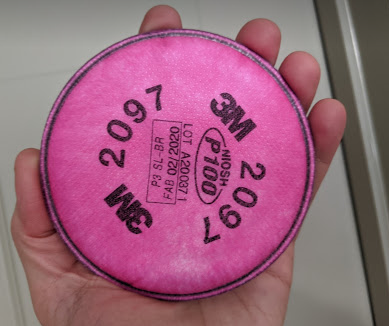Disclaimer: We present these results for information purposes only. The 3D printed adapter and the snorkel mask modification does not produce certified PPE or medical equipment. The authors of this page and their employer, Washington University in St Louis, waive all responsibilities regarding use and application of the information contained on the page.
Background:
The
COVID-19 crisis has resulted in a shortage of personal protective equipment
(PPE) [1]. COVID-19 is currently the leading cause of death in the United
States[2]. Health care providers caring for COVID-19 patients or at high risk
of being exposed to the SARS-CoV-2 virus benefit from a face shield to protect
against aerosol droplets that could hit the face and minimize the chance of
inadvertently touching the face with contaminated hands, and air filtration to
filter out aerosolized SARS-CoV-2. Adapting commercially available full-faced
snorkel masks (as Ocean Reef did here) have been proposed as an alternative to narrow the gap in PPE, to provide a combination face shield and filtration system. In this project we quantify the air filtration quality achieved with a full-faced snorkel mask, using a 3D printed adapter to attach commercially available 3M P100 particulate filters to an Ocean Reef snorkel mash provide air filtration.
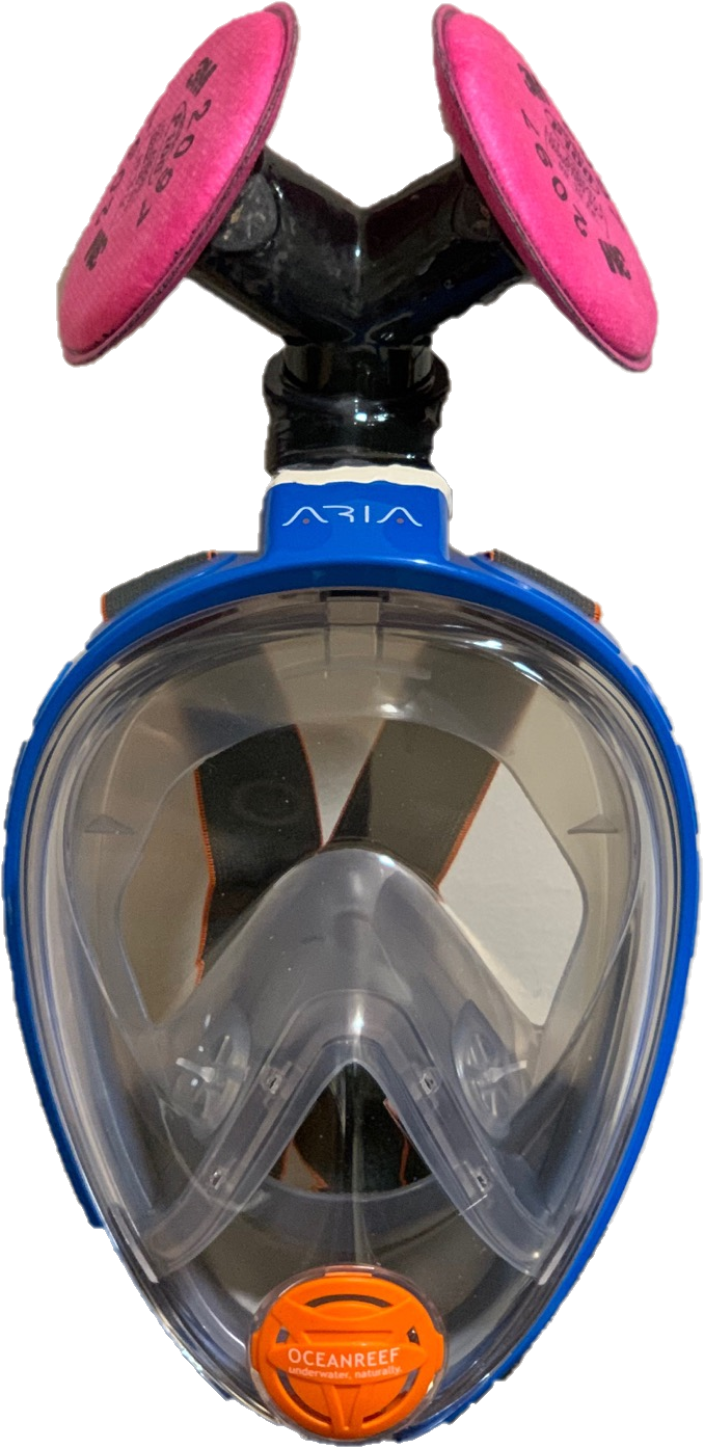
1. Alltucker, K. 'Can't expect nurses to be miracle workers': Mask, equipment shortages push nurses to brink across nation. USA TODAY, 2020.
2. Geggel, L. COVID-19 is now the leading cause of death in the United States. LiveScience, 2020.
3. Group, O.R. EMERGENCY ONLY adaptations of full face masks to address COVID-19 CRISIS. 2020 [cited 2020 4/14/2020]; Available from: https://oceanreefgroup.com/covid19/.
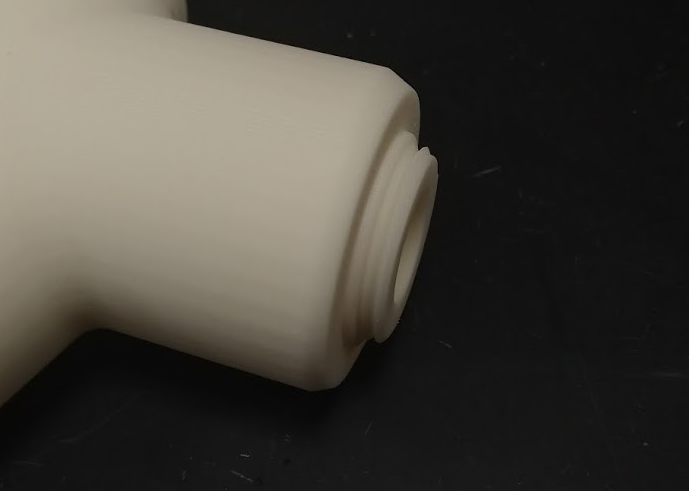

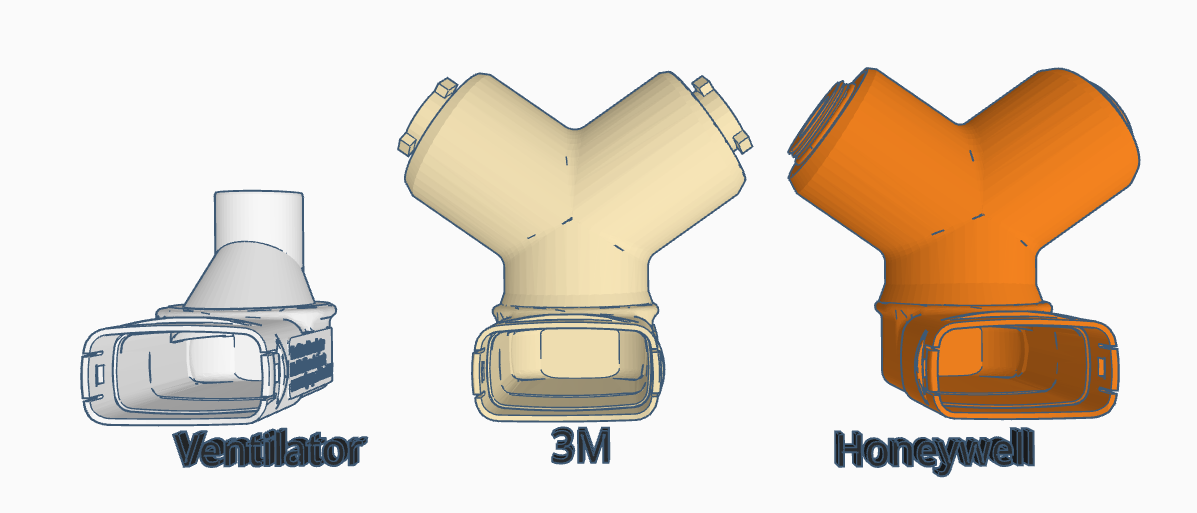 We tested the 3M design printed in PLA and coated in
We tested the 3M design printed in PLA and coated in 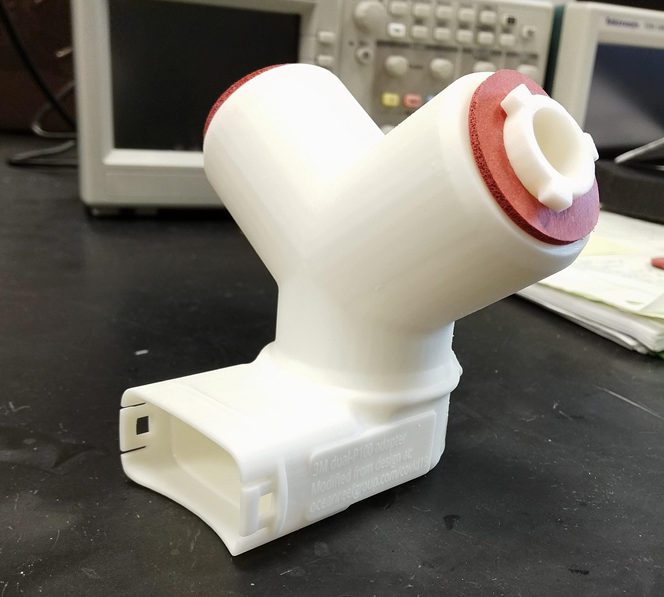
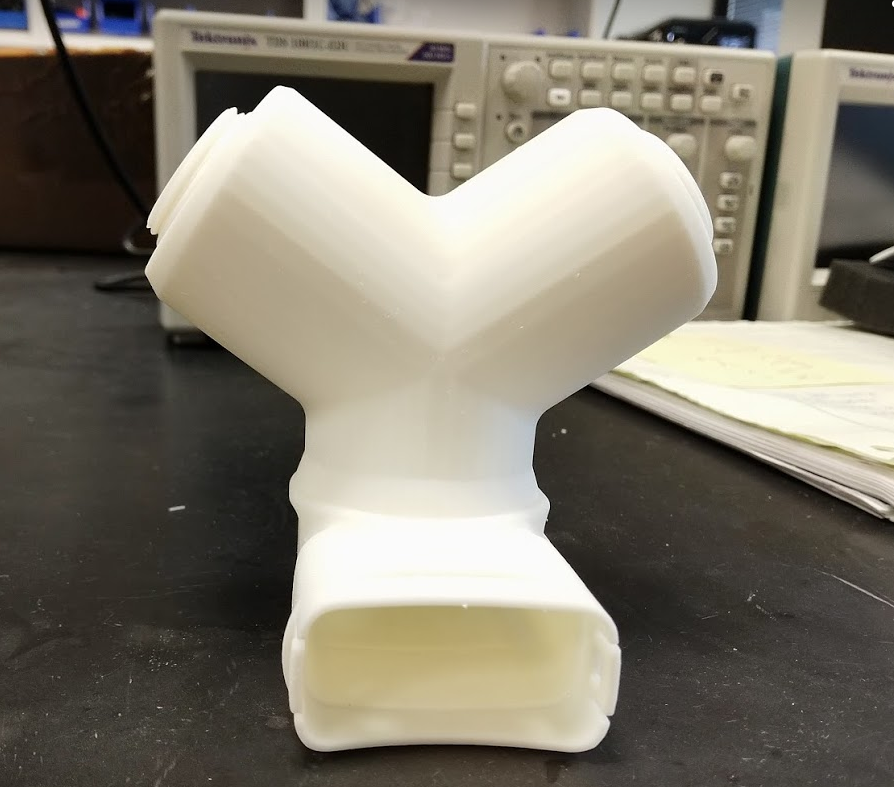
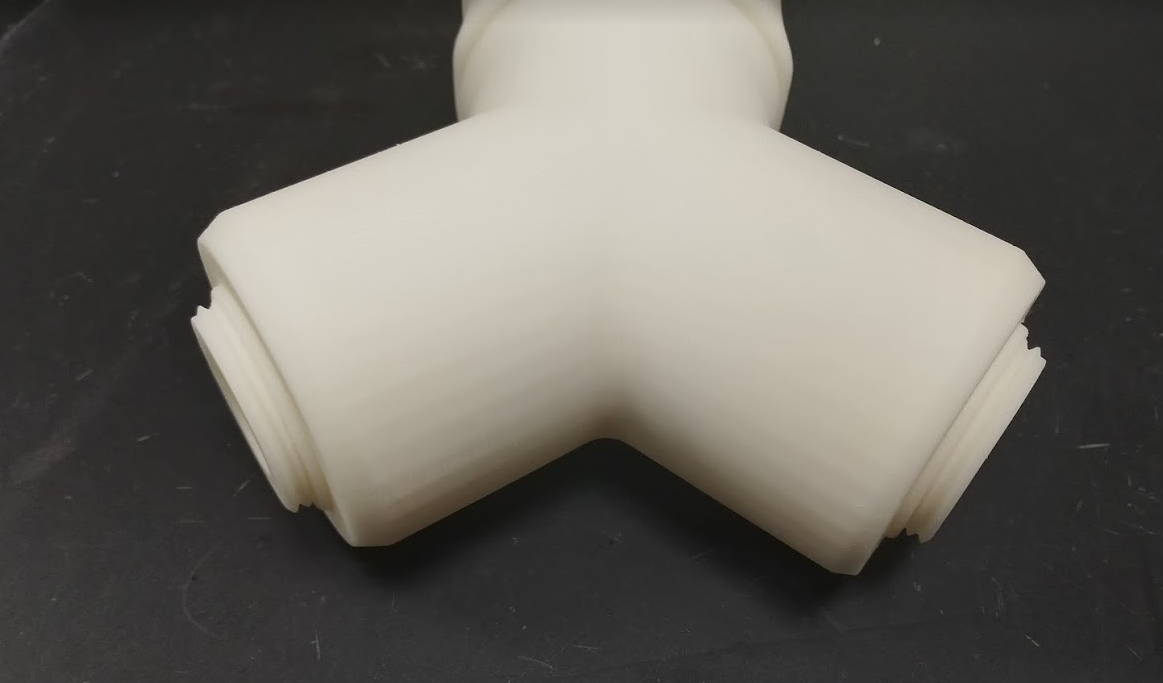
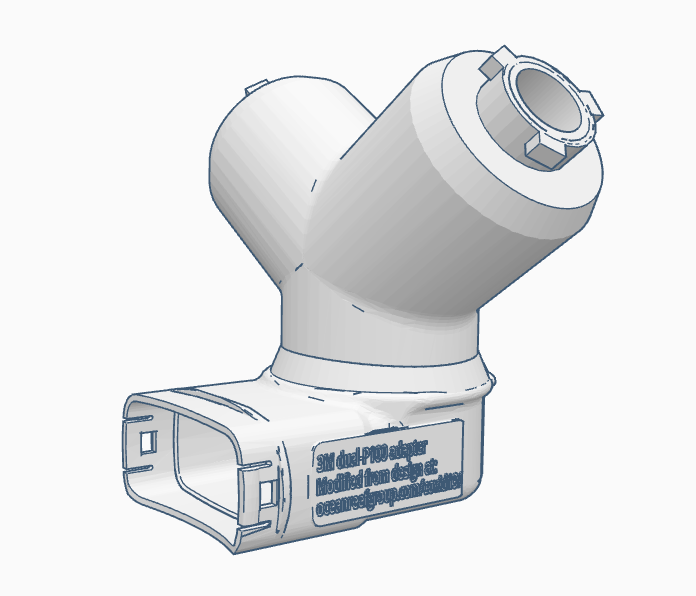
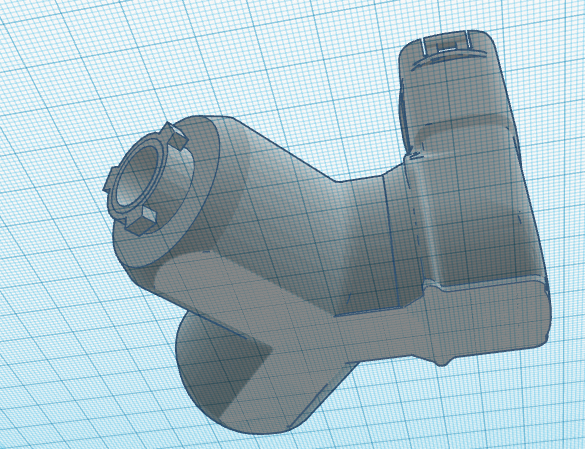

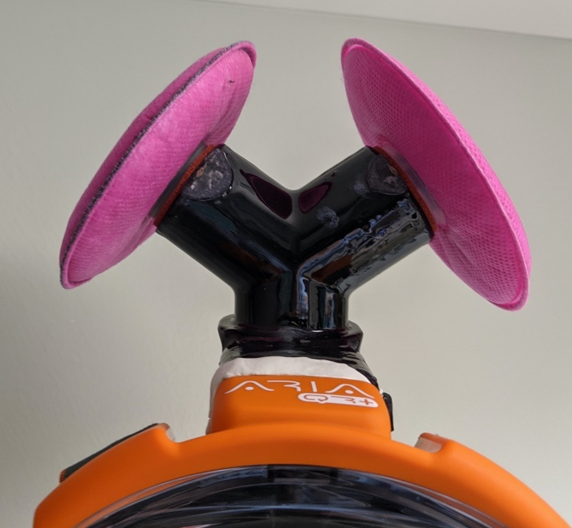

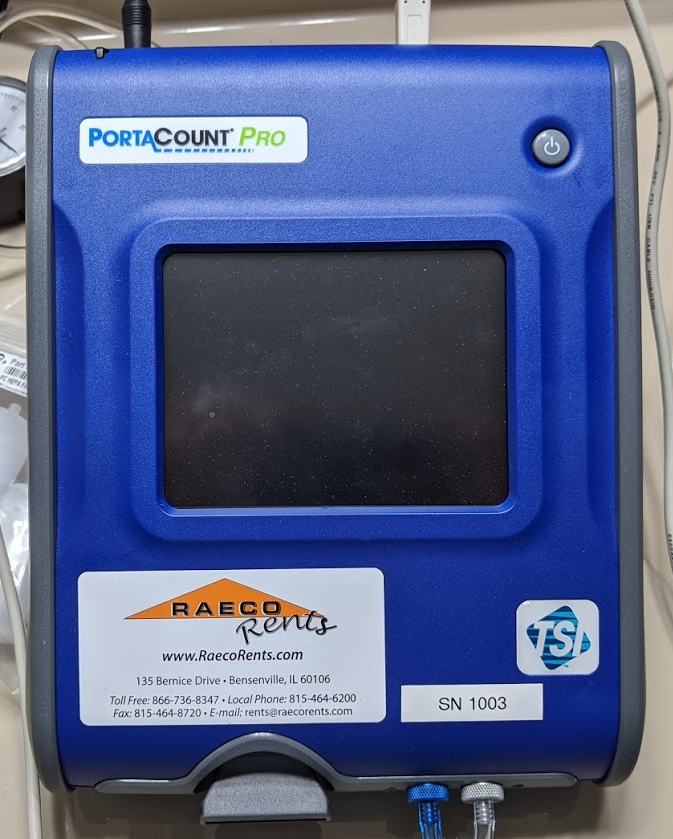


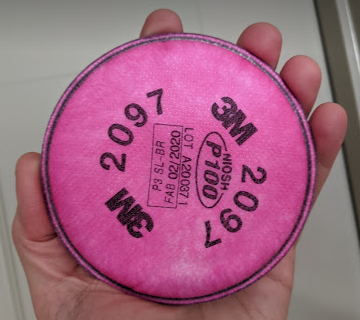
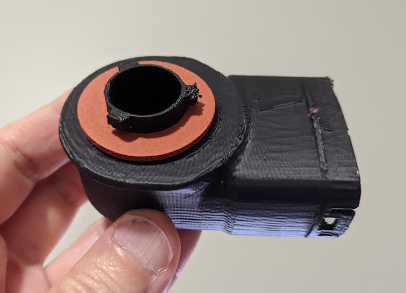

 Our first attempt to adapt a filter to the Ocean Reef mask was to use a HEPA filter from a vacuum cleaner. This was attractive as these filters are cheap, widely available, and supply does not appear limited at the moment. We modified the adapter provided by the Ocean Reef group, more info on that adapter can be found
Our first attempt to adapt a filter to the Ocean Reef mask was to use a HEPA filter from a vacuum cleaner. This was attractive as these filters are cheap, widely available, and supply does not appear limited at the moment. We modified the adapter provided by the Ocean Reef group, more info on that adapter can be found 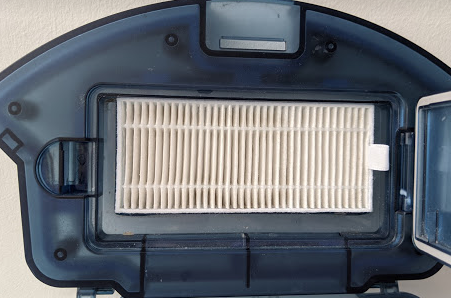
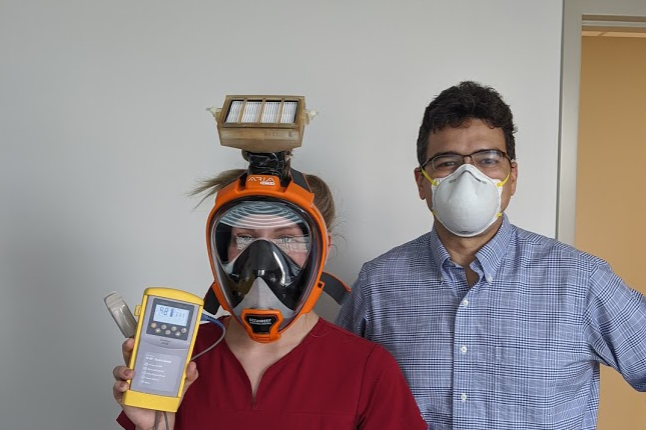
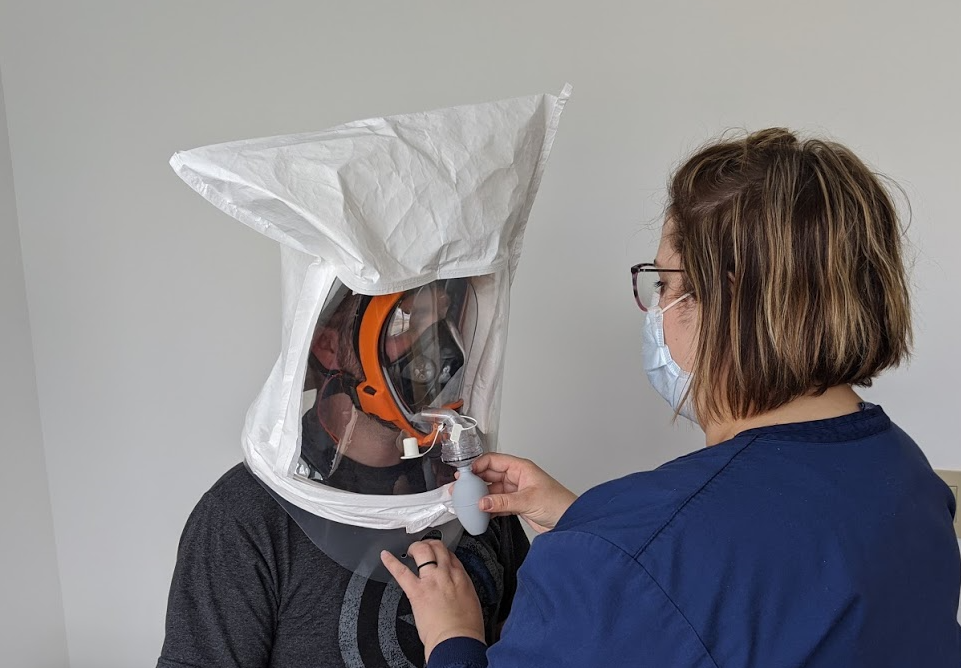
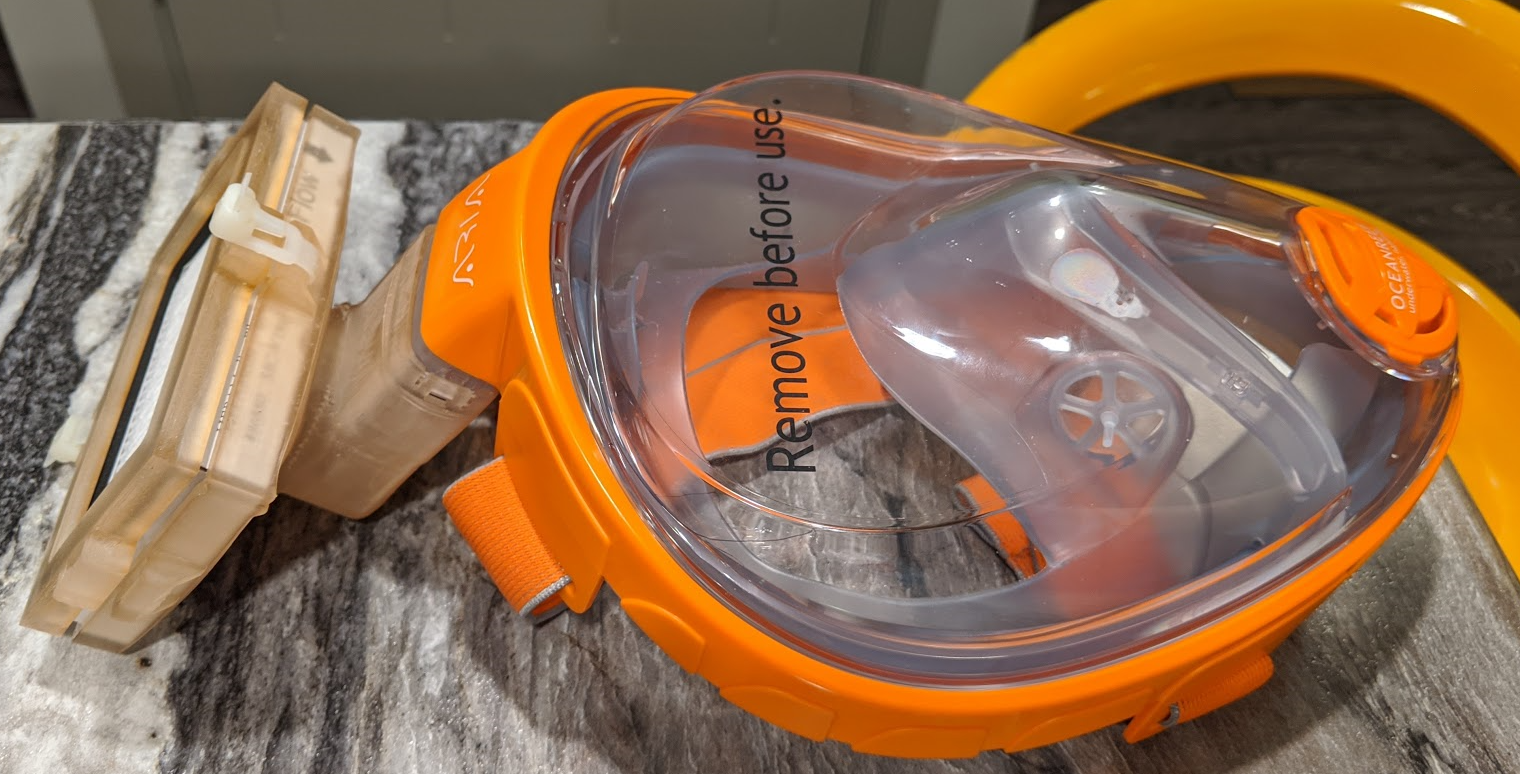 This design was tested at Washington University in St Louis and unfortunately it failed to achieve the filtration level of a P95 mask. We abandoned this approach at this point and moved to testing 3M P100 filters (below). That said, there are supply issues with obtaining the 3M filters at the moment so we may revisit this design in the future.
This design was tested at Washington University in St Louis and unfortunately it failed to achieve the filtration level of a P95 mask. We abandoned this approach at this point and moved to testing 3M P100 filters (below). That said, there are supply issues with obtaining the 3M filters at the moment so we may revisit this design in the future.